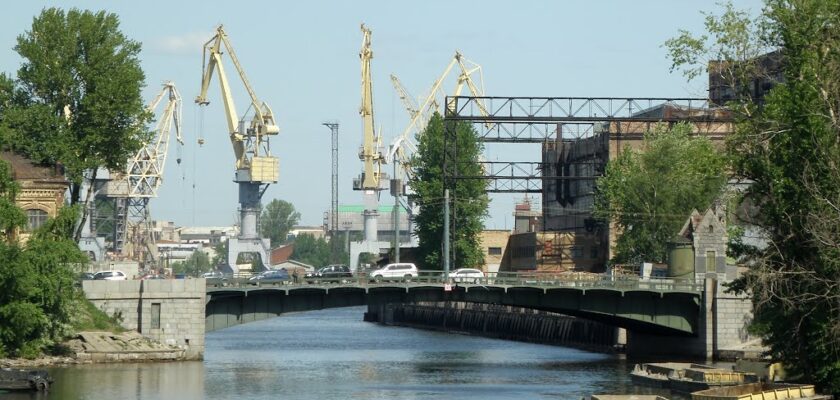St. Petersburg Bypass Canal
Obvodny Canal is the largest waterway of St. Petersburg, 8.08 km long, connecting the Neva River with the Ekaterinhofka, a channel of its delta. The starting point is the Alexander Nevsky Monastery. The canal used to cross an undeveloped area and served for cargo delivery by a roundabout way, bypassing the center of St. Petersburg. Over time, the embankment was occupied by industrial enterprises, which polluted the waters of the man-made channel. City old-timers still remember the joke: “How to get to the Obvodnoy Canal? – Go to the smell.” Now it has lost its relevance.
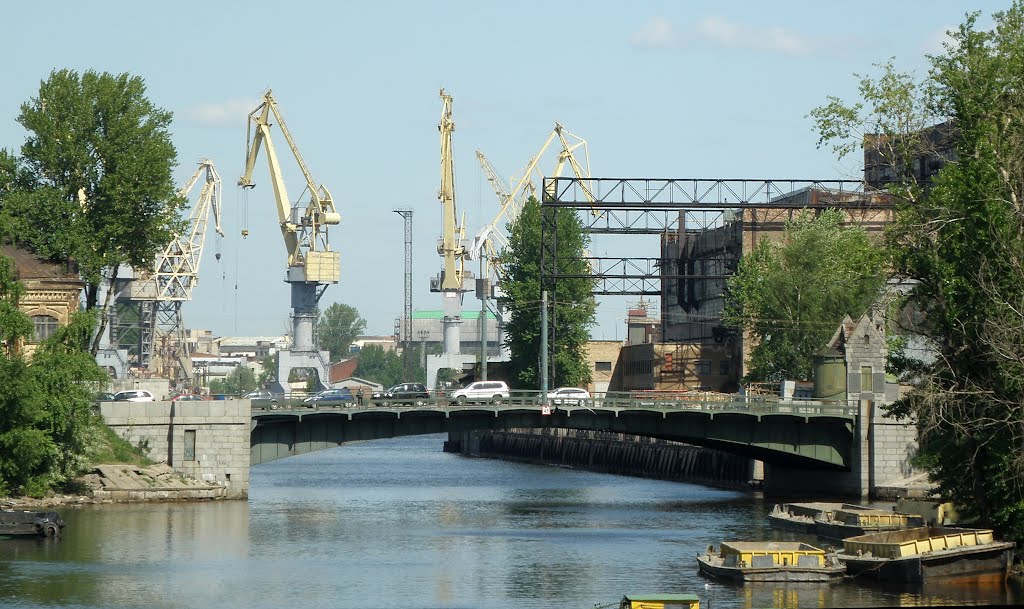
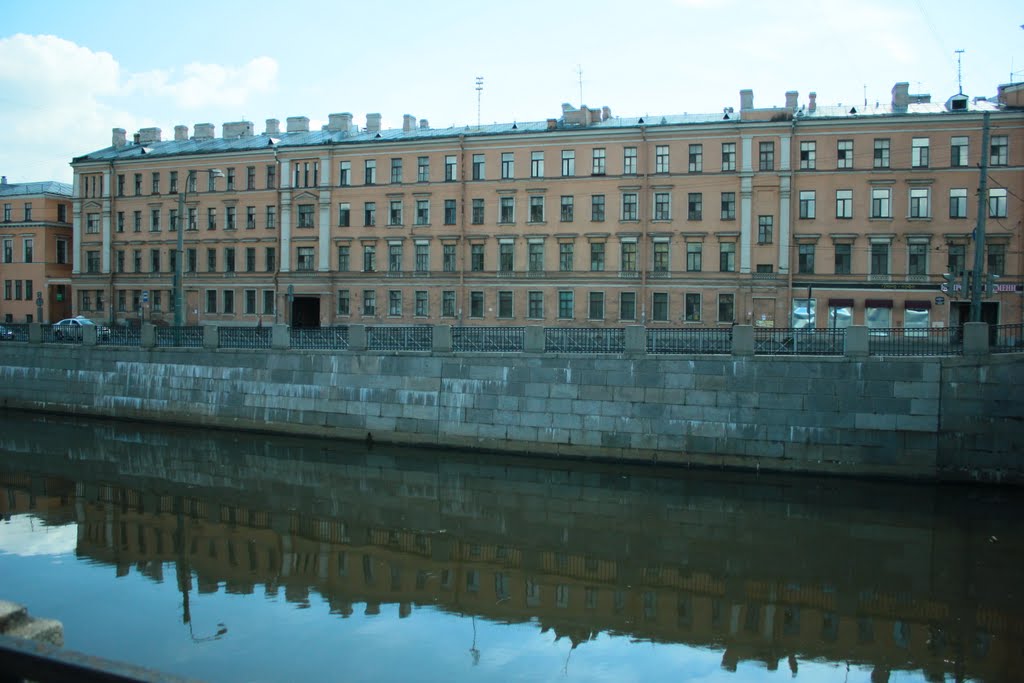
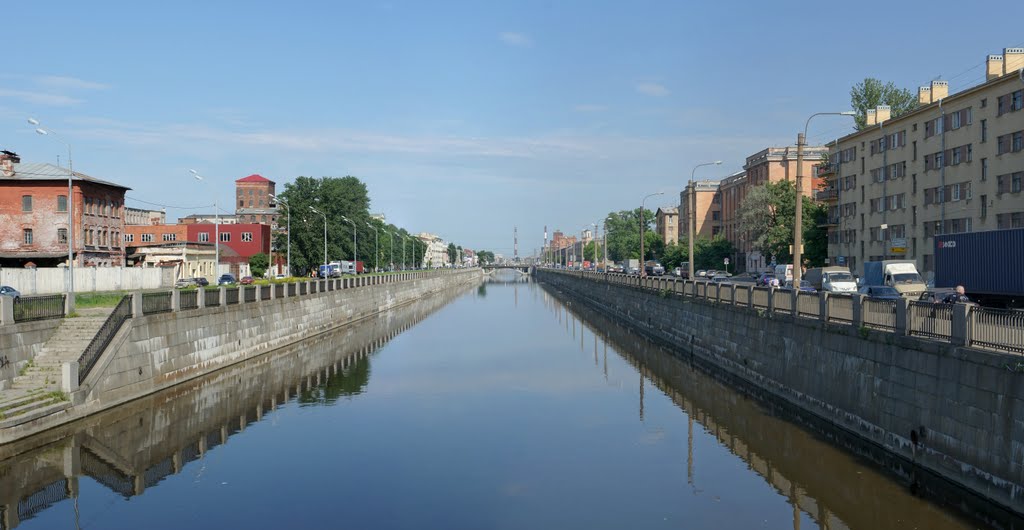
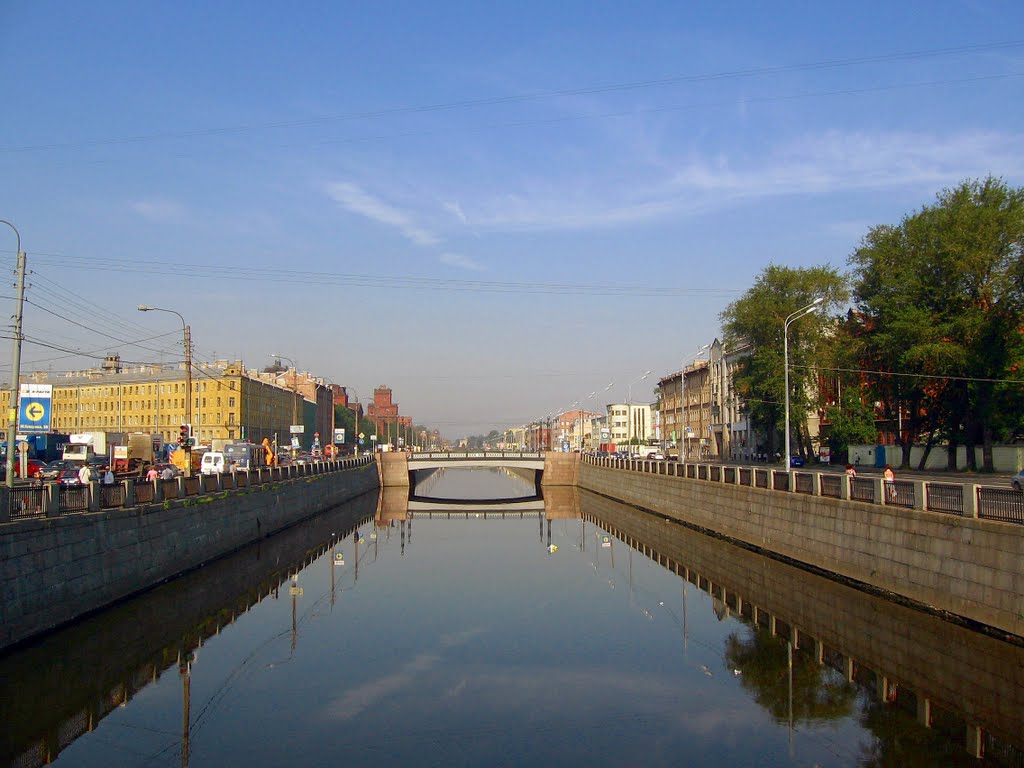
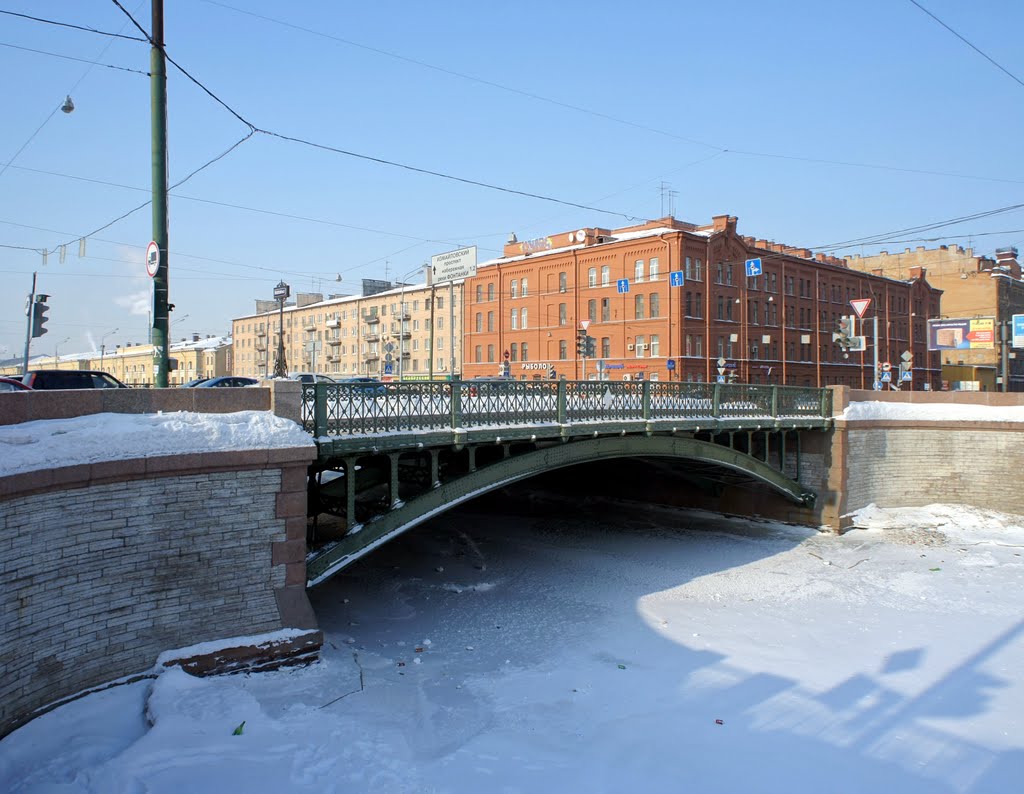
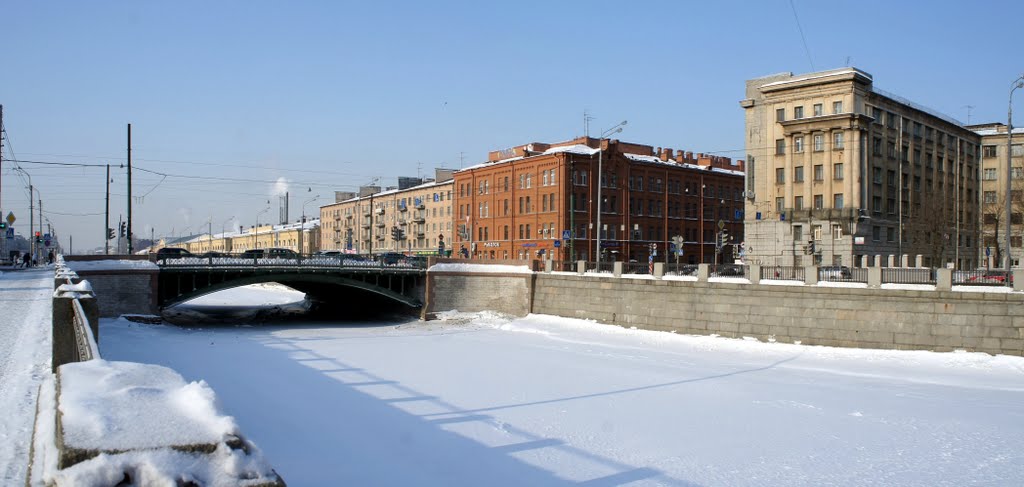
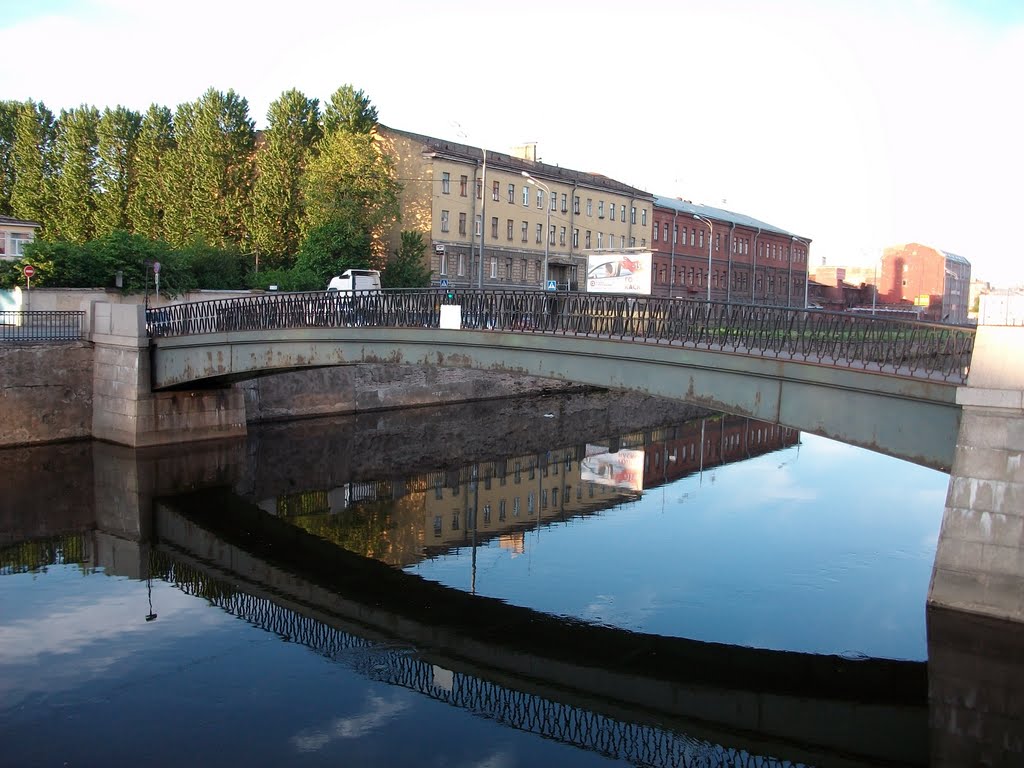
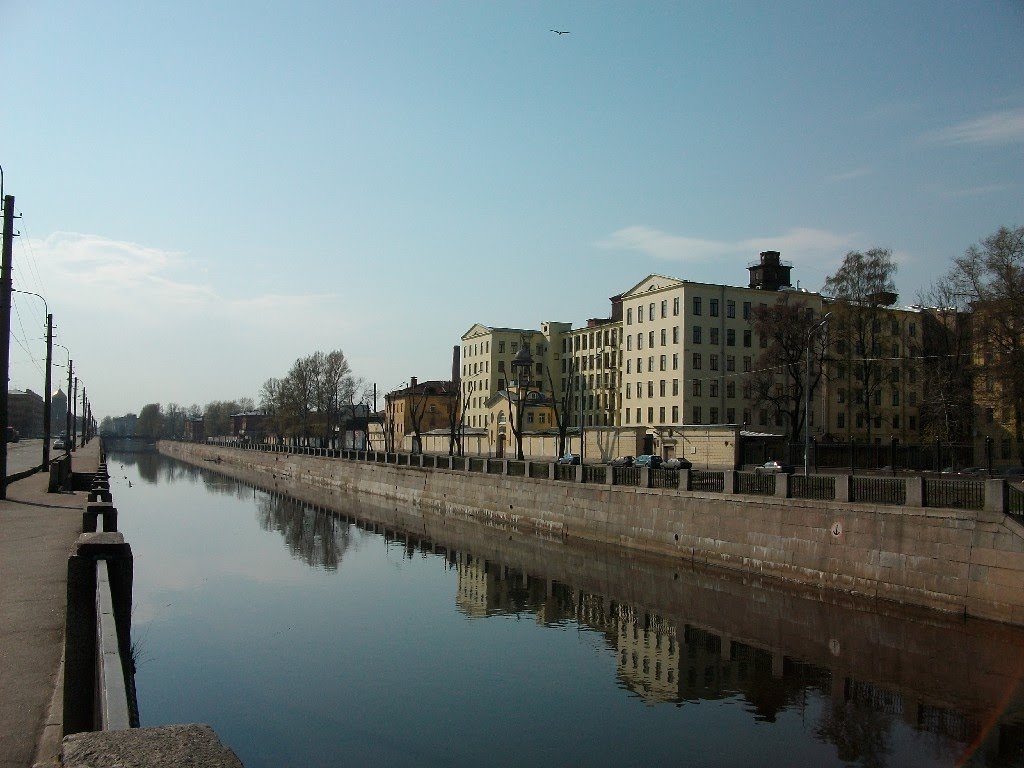
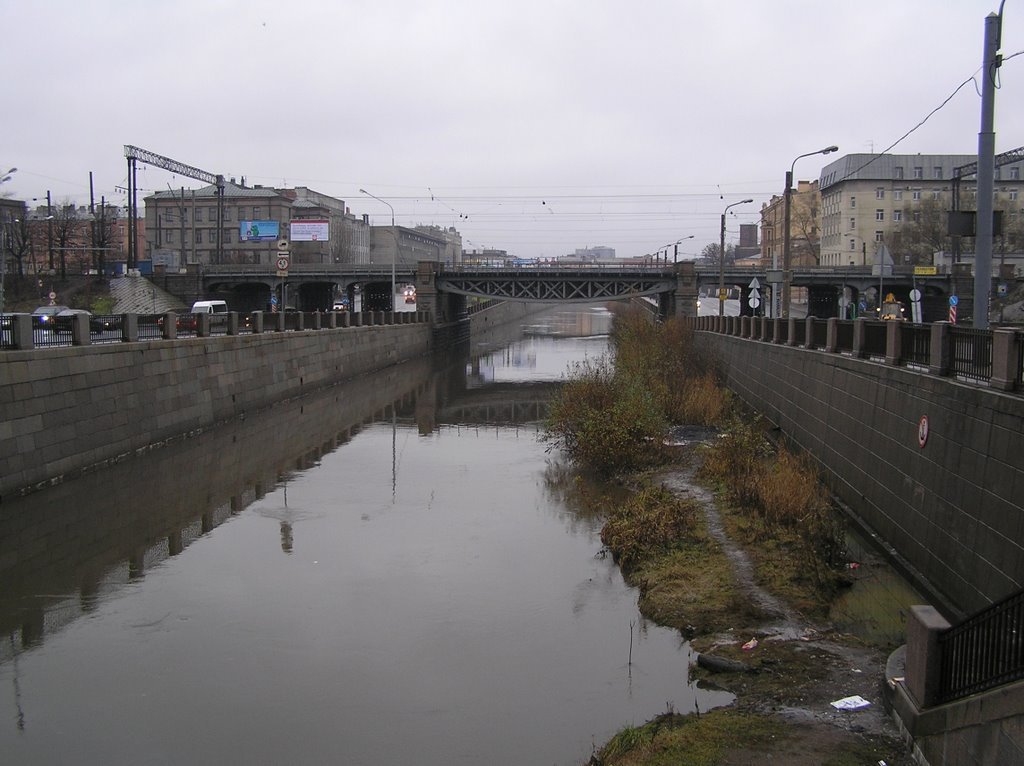
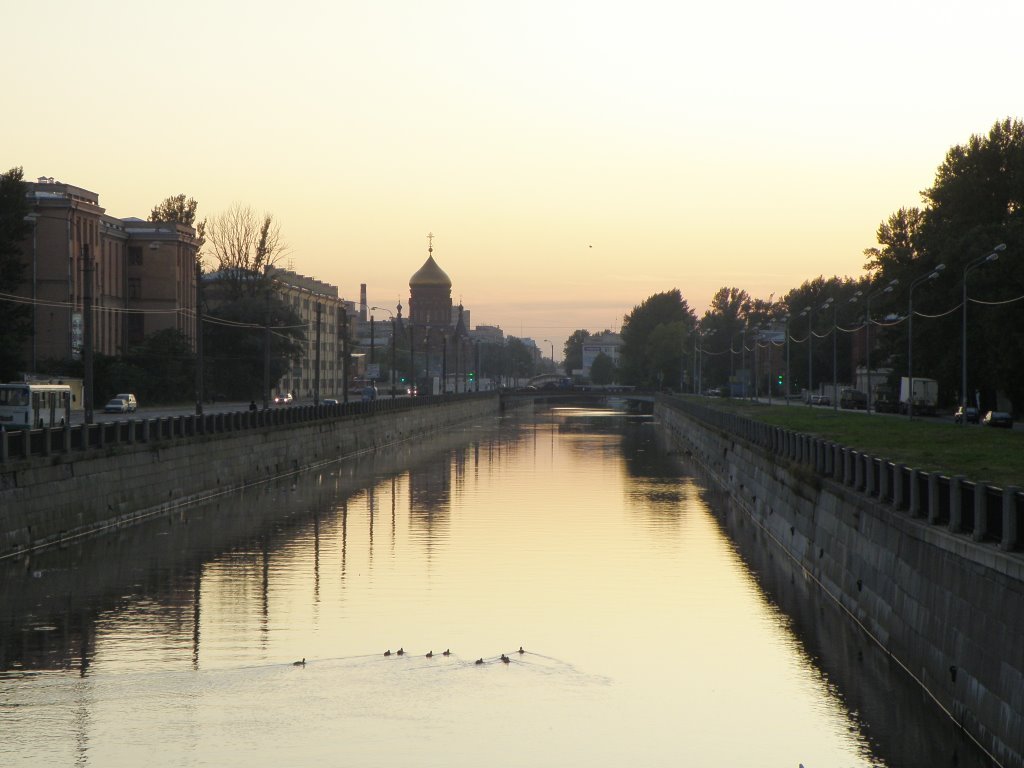
Video: Obvodniy Kanal
Historical sketch
The construction of the city’s waterway, which began in 1769 between the Ligovsky Canal and the Ekaterinhofka River, took about 11 years. The canal was named Gorodskiy, afterwards – Gorodoviy, but soon the final variant – Novy was assigned to it.
.
L. L. Carbonnier d’Arsit, a Russian engineer of French origin, worked on the project. He took into account the requirements of Alexander I to lay such a channel, which would play the role of a transportation highway between the seashore and the Neva. From the side of St. Petersburg the channel was fortified with a defensive rampart, and in 1805 the existing water body was widened and deepened. At the same time they laid its eastern part according to the drawings of I. K. Gerard..
This was not the end of the construction work. Already in the first half of the XIX century, engineers B. P. E. Clapeyron and P. P. Bazen undertook the ennobling of the canal. In October 1833 the grand opening of the waterway took place. Since the canal “encircled” the city from the south side and served as its conventional boundary, the new name – Obvodny – immediately appeared in the background of the citizens’ associations and has been preserved to this day.
.
In the 1840s, the riverbed acquired the Clay Bucket, a G-shaped channel where ships stopped and unloaded. It stretched from the Alexander Nevsky Monastery and then turned to the west. A railroad was laid along the embankment, which was dismantled in the second half of the XX century. Near the Atamansky Bridge the canal widened, providing space for ships to congregate. This section was known as the Obvodnoy Canal basin.
.The XIX century determined the further fate of the embankment. The industrial activities of businesses turned the channel into a ditch where sewage flowed. Soon they were joined by station wastes. The bypass channel became so polluted that it began to emit an unpleasant odor, which became a cause for numerous jokes of the citizens. The unofficial name of the canal – Obvonny. The specific odor still bothers the residents of St. Petersburg, especially in the warm season.
.
Although the Obvodny Canal was intended for navigation, now only riverboats with a shallow draft travel along it. The channel has become shallow and has lost its importance over time. But the embankments got a second breath and turned into the main thoroughfares of the city. The water space of the canal is crossed by 23 bridges: 2 railroad bridges, 6 pedestrian bridges and 15 automobile bridges.
.
Mystical past
The chronicle of the Obvodny Canal is shrouded in sinister mysteries. Since ancient times this place has been considered cursed. The reason for this is one mysterious story that took place in 1923.
.
The construction of a heating main not far from the modern bus station turned out to be unexpected: digging deeper, the workers discovered a bizarre stone structure. It was formed by massive slabs of granite, laid out in the shape of a circle. The surface covered with signs hid the decayed remains of several bodies. Well-known at the time archaeologist Gvozditsky, arriving at the site, was extremely surprised: the find turned out to be a burial of Scandinavian origin, dating from the XI-XII centuries.
.
In the scientist’s opinion, the construction of the heating main should have been stopped immediately, but he was not listened to. Moreover: the next day all Leningrad publications were full of articles calling to forget about the vestiges and write the future. Gvozditsky was accused of being influenced by the bourgeoisie. The fate of the ancient archaeological monument was unfortunate. The massive slabs were used to make the curbstones that decorated the buildings of Ligovsky Prospekt. The remains of the deceased found their final resting place in a landfill.
.On April 12, 1923, the residents of the city were shocked by a horrifying incident: the life of a washerwoman tragically ended in the waters of the canal. From that day on, the Borovoy, Predtechensky and Novo-Kamenny bridges literally attracted the city’s suicides. The number of drowned reached a critical level in the fall of the same year. Numerous checkpoints appeared in the area, which were supposed to timely prevent attempts of passers-by to settle scores with life. The cardinal measures bore modest fruit: only Comrade Myasopotamsky, a member of the RSDLP, was among those rescued. He was taken to the Botkin barracks to the care of the famous psychiatrist Efimson.
.
For a long time the doctor observed the behavior of the failed suicide and soon suddenly became interested in searching for archival documents, which would mention incidents, in one way or another related to the Obvodny Channel. This is how Efimson came upon the archaeologist Gvozditsky, who at the meeting told the psychiatrist about the discovery of 1923 and showed him the “copied” signs carved on granite slabs. It turned out that the burial was of ritual origin, but it was unfortunately not possible to decipher the ancient writings..Diaries of a psychiatrist lift the veil of the mystery of the Obvodny Channel only partially. It all began with the foundation at the confluence of the Neva and Okhta fortress Landskrona on the initiative of Swedish Marshal Torkel. His troops showed surprising cruelty towards the settlements on the rivers Sutilla and Keme (today’s Volkovka and Fontanka respectively). On the bank of the former, the Swedes discovered a pagan temple where sacrifices were regularly performed. This was the way Karelian idolaters wanted to placate the gods: by killing animals and their own children. The soldiers, seeing such an unpleasant picture, began to violently crush the pagan statues. With the appearance of a mad sorcerer, who began to curse the pogromists, the soldiers hesitantly stopped, but soon solved the problem cardinally: by killing the old wicked man.
.
This did not help: animal fear and fear of punishment from above were firmly rooted in the souls of the Swedes. The frightening stories about the sorcerers of Karelia, which kept the whole of Scandinavia in fear, added fuel to the fire. Marshal Torkel decided to act according to the principle “you can drive a wedge out with a wedge”: on the place where the blood of innocents had been spilled before, an equally frightening sacrifice was made to placate otherworldly forces. This time the lives of five young Karelian girls were taken. As soon as the bodies of the girls were thrown to the murdered wise man, cruel laughter sounded over the forest, and a sudden gust of wind tore a huge tree from its roots. Since then, about this place went a bad reputation, which has spread far beyond the limits of St. Petersburg.
.
Superstition still lives among the townspeople. Even during the construction work in 1805, the diggers did not want to stay for long near the mouth of the Volkovka, explaining it with mystical rumors. Only I.K. Gerard’s threat to send everyone to hard labor motivated the workers to continue picking the soil at this perishing place – a kind of “magnet” for those who wanted to go to their graves.
.Attractions of the Obvodniy Canal
The architecture of the embankment barely reminds of the traditional grandeur of St. Petersburg, but at the same time has an important historical significance. The bread barns of the Alexander Nevsky Lavra are located in buildings #3, 4 and 5. Not far away in a sand-colored building is the St. Petersburg Theological Academy, an example of classical architectural style.
.
In the brick and unsightly-looking house No. 74 is located the Gas Plant of the Metropolitan Lighting Society, whose employees were responsible for illuminating the streets of Northern Palmyra. House No. 90a housed the factory of A. F. Streeter. In a considerable distance from it (No. 136) there is a paper-spinning factory of Golenishchev’s heirs, erected in the second half of the XIX century. On the embankment of the Obvodny Canal there is a place for Izmailovsky provision stores (No. 169-173) – a monument of Russian classicism.
.
The Palace of Culture named after A. D. Tsyurupa is located in house No. 181. This majestic gray building with massive columns was erected in 1913, designed by Russian architect N. V. Dmitriev.
.How to get there
Getting to the Obvodny Canal is not difficult. Since it crosses a significant part of St. Petersburg, the transportation interchange offers more than two dozen ways to get to the embankment of the most mysterious canal of the city. It can be done:
.- by bus: No. 15, 17, 50 (get off at the stop “Obvodnoy Canal Embankment” and walk down to the canal along Moskovsky Avenue), No. 3, 8, 10, 43 (get off at the stop “Obvodnoy Canal Embankment” and walk 100 meters along Lermontovsky Avenue), No. 2, 6, (go to Staro-Petergofsky Prospekt and go down to the canal), No. 35, 49, 58, 65, 66, 67, 67B, 70, 71, 74, 76 (stops are located along Obvodnoy Canal);
- metro: Violet line or 4th branch, Obvodny Kanal station;
- Shuttle cabs: K-3, K-25, K-36, K-213, K-338, K-350 (get to the stop “Obvodny Channel Embankment” and walk along Moskovsky Prospect), K-8, K-16 (get off at Professor Kachalov Street and walk up Obukhovskaya Defensa Avenue in the direction of car traffic); K-404 (get to the railway station “Baltiysky”), K-1, K-2, K-6K, K-169, K-177, K-195, K-306 (get to the stop “Obvodnogo Canal Embankment” and go down along Staro-Petergofsky Prospekt), K-62, K-66, K-67, K-252 (stops are located along the canal);
- Tram: Nos. 10, 24, 65 (get to Prof. Kachalova St. and walk about 300 m to the canal), No. 16 (get to Staro-Petergofsky Prospekt and go down along the streetcar tracks), No. 41 (get to Livlyandskaya St.). .
